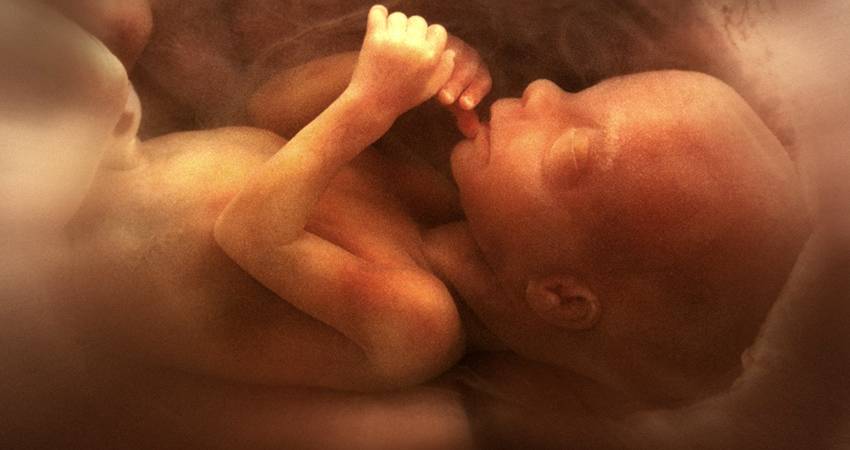
BARBARIC: Montana votes against medical attention for infants born during failed abortions

The result of a recent Montana Referendum saw 52.6% of voters voting against the measure proposed by the ballot which, if passed, would have made any infant born alive at any stage of development, a legal person. A majority vote in support would have also resulted in these vulnerable babies entitled to medical care if born alive after an induced labor, cesarean section or attempted abortion.
The text of the ballot read:
“An act adopting the born-alive infant protection act; providing that infants born alive, including infants born alive after an abortion, are legal persons; requiring health care providers to take necessary actions to preserve the life of a born-alive infant; providing a penalty; providing that the proposed act be submitted to the qualified electors of Montana; and providing an effective date.
[ ] YES on Legislative Referendum
[ ] NO on Legislative Referendum”
Nancy Maxson and Nancy Leifer, co-presidents of the League of Women Voters Missoula argued against the proposal, stating that the proposal was “unnecessary”, and that “Montana law already recognizes the responsibility of medical providers to care for viable infants outside of the womb”. This would be referring to the “Protection of Premature Infants Born Alive” subsection of the Montana Abortion Control Act, which states:
“A person commits an offense … if the person purposely, knowingly, or negligently causes the death of a premature infant born alive, if the infant is viable.”
Emphasis is on the word ‘viable’. Why didn’t the sentence finish at “born alive”? Viability is defined in the piece of legislation as the “ability of a fetus to live outside the mother's womb, albeit with artificial aid.” The problem is, how accurately is viability judged, in a horrifically stressful situation, where a baby is born alive during an abortion, for example? Every attempt ought to be made for every single infant born alive, full stop. Time spent judging ‘viability’ is valuable time lost, that should have been used to provide medical care to the living, breathing, vulnerable human being in front of them.
Outside of the above law, fetal viability is commonly considered to be “the point at which a baby can be resuscitated at delivery and can survive without significant morbidity”, which is approximately 24 weeks, or 6 months. But babies are born before this point and survive - some with life-long difficulties, but others with very few. . In 1987, James Elgin Gill was born at just 21 weeks - 3 weeks before current standards of ‘viability’. He was expected to die, and if by some miracle he survived, “to have multiple and severe handicaps”. James proved them all wrong, as he survived and is now a “healthy adult”.
More recently, we have Richard Hutchinson, who was born on June 5th 2020. Baby Richard was born at just 21 weeks and 2 days, and once again, well before the cut-off of ‘viability’. He was even given a 0% chance of survival by the neonatology team. Richard spent 6 months in intensive care, and went home to his loving mum and dad just in time for Christmas, and celebrated his first birthday the following summer.
More recently, we have Richard Hutchinson, who was born on June 5th 2020. Baby Richard was born at just 21 weeks and 2 days, and once again, well before the cut-off of ‘viability’. He was even given a 0% chance of survival by the neonatology team. Richard spent 6 months in intensive care, and went home to his loving mum and dad just in time for Christmas, and celebrated his first birthday the following summer.

Even more amazingly, baby Richard's record was beaten just a few weeks after he was born! Curtis Zy-Keith Means was born after spending just 21 weeks and one day inside his mother’s womb. Watch the video below to see just how happy both mom and baby are:
The point is this: ‘viability’ is not the same for every baby. When it comes to human life, especially that of an innocent baby born alive during an abortion or any other procedure, the first thought that runs through a medical practitioner's head should not be about ‘viability’, it should be about keeping the living human being in front of you alive. This is why the above referendum was so important.
Another worrying element of this ‘viability’ argument, is that it often comes hand-in-hand with the ‘quality of life’ question, hinted at in the above definition of ‘viability’. No one will deny that “significant morbidity” in life causes suffering. But, should the possibility of health complications later in life play a role in the judgment of whether or not to care for an infant born alive? More significantly, should the judgment of a medical professional, which is not immune to fallibility, about the quality of life of an infant who may suffer later in life due to “significant morbidity”, be the deciding factor in whether or not they receive necessary medical attention to keep them alive? “Why is the beating heart of a human being not enough?” one might ask Nancy Maxson and Nancy Leifer, co-presidents of the League of Women Voters Missoula, and others who opposed even putting the question before the people of Montana.
The result of the referendum was sickening. While there were complaints about the wording of the ballot, which may have led voters astray, it cannot be denied that the pro-abortion movement has dehumanised the unborn to such an extent that even when they are born, they still don’t deserve a chance at life. But we must not let this dishearten us. As public officials and politicians dig themselves deeper and deeper into the pro-abortion hole, it is our job to draw the attention of the public towards the horrendously anti-life narrative, choking societies across the world like a poisonous fog. If premature, pre-viability babies have taught us anything, it’s that the human will to survive is powerful.
There is only one destination for those who subscribe to and endorse the death-obsessed culture. The line of those who cherish life will never end.
Featured
- Campaign to stop EU funding out of state abortions - tell your EU commissioner to vote NO
- Judge recuses himself from case of woman praying in censorship zones for “apparent bias”
- I’m a Celebrity star criticises “sad” UK law that aborts babies with Down Syndrome up to birth
- British actress speaks out on “serious risk” assisted suicide bill has for those with eating disorders
- Caplan’s “Tragic Hysteria of Abortion” discusses the flaws with mainstream Turnaway Study interpretations
- Backlash as Scotland report proposes legalising sex-selective abortion up to birth
- Canada hits new record as 1 in 20 deaths a result of Euthanasia
- Ben Scallan defends pro-life on TV show Dinner with the Enemy
- Influencers share the loss of their beloved unborn baby
- Dublin woman with cancer says unborn child was sent to save her
- Mother and baby doing well after surgery for mother’s cancer during pregnancy
- Josiah: Abortion Survivor
- Loving the Unborn
- Rally for Life 2025
- Don't assist Suicide 2024


























